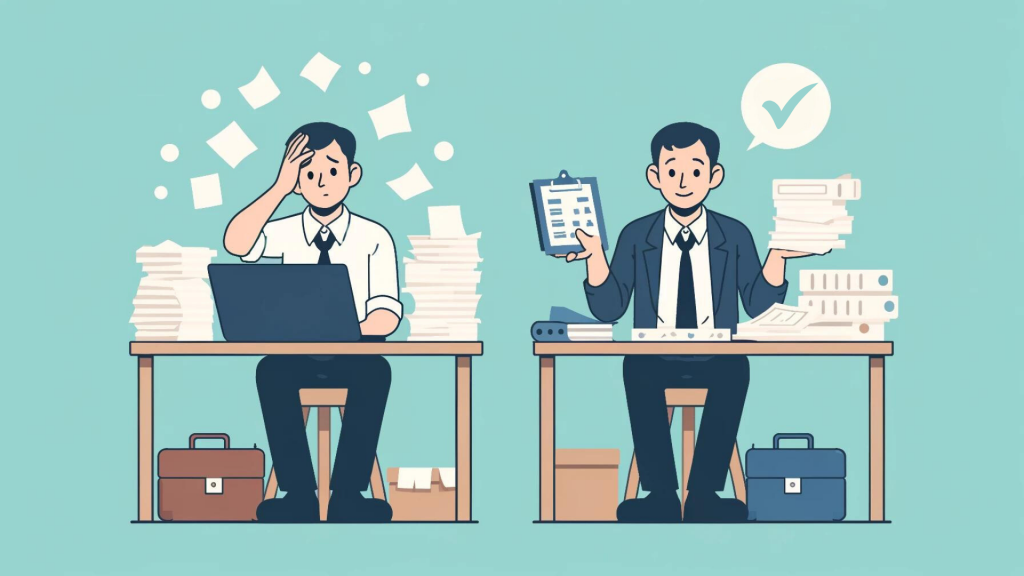Most of the time, there’s always work that exceeds the physical hours or resources many of us have at our disposal, whether it’s a small task or a large project.
I frequently hear from some of my acquaintances that they find themselves working weekends or needing to stay overtime to meet deadlines.
Although there are cases when this needs to be done, most of the time, it could be avoided by utilizing prioritization.
So, let’s talk about it.
First off, let’s clear the air by saying that being busy isn’t the same as being productive.
In a world that glorifies the hustle, it’s easy to fall into the trap of thinking that a packed schedule equates to high productivity.
However, the truth is, without proper prioritization, we’re likely just spinning our wheels, getting burned out without really moving forward.
The Magic of Prioritization
Imagine this: you are managing multiple tasks, your email inbox is overflowing, and your calendar is a mosaic of back-to-back meetings. Here’s where prioritization wields its magic.
It’s not about doing more things; it’s about doing the right things. By prioritizing your tasks, you ensure that you’re focusing on what truly moves the needle for your goals.
How to Prioritize Effectively
- Identify Your Big Rocks: Start with identifying the tasks that have the biggest impact on your goals. These are your “big rocks.” Everything else is sand.
- The Eisenhower Method: Use the Eisenhower method to categorize tasks into four quadrants based on urgency and importance. It’s a fantastic way to visualize what you need to focus on, delegate, schedule, or even eliminate. (See the Eisenhower Matrix example below).
- Learn to Say No: This might be the toughest one. Not every task, meeting, or project deserves your time. Be strategic about what you agree to take on.
- Use Tools and Tech: Leverage technology to keep track of your tasks and priorities. Apps like Trello, Asana, or Google Sheets can be lifesavers in managing your workload.
- Reflect and Adjust: Prioritization isn’t a set-it-and-forget-it type of deal. Regularly reflect on your priorities and adjust as needed. Flexibility is key.
- Communication: Keep the lines of communication open with stakeholders about priorities. If unforeseen interruptions occur, discussing them promptly can help adjust expectations and timelines accordingly.
The Eisenhower Matrix Example
The Eisenhower Matrix is a simple yet effective approach for prioritizing tasks based on their urgency and importance. It helps in making decisions on what to focus on immediately, what to schedule for later, what to delegate, and what to eliminate.
| Urgent | Not Urgent | |
|---|---|---|
| Important | Do First | Schedule |
| Tasks that are both urgent and important. Require immediate attention and action. Examples: Crises, deadlines, emergencies. | Tasks that are important but not urgent. These should be scheduled for later. Examples: Planning, exercise. | |
| Not Important | Delegate | Eliminate |
| Tasks that are urgent but not important. These can often be delegated to someone else. Examples: Some emails, some meetings. | Tasks that are neither urgent nor important. These should be eliminated as they do not contribute to your goals. Examples: Time-wasting activities, some phone calls. |
Final Thoughts
So, while prioritization may not be a cure-all, it is an incredibly useful approach to elevate the success of your work and potentially reduce stress. It may feel counterintuitive to pause and evaluate your tasks, but organizing your priorities can end up being a real time – saver down the line.
Feel free to share your thoughts!
Vladimir
Next Steps
- Review the “So, how do you utilize prioritization?” section above
- Create your own Eisenhower Matrix
- Apply this article to your work
Hope it helps!

